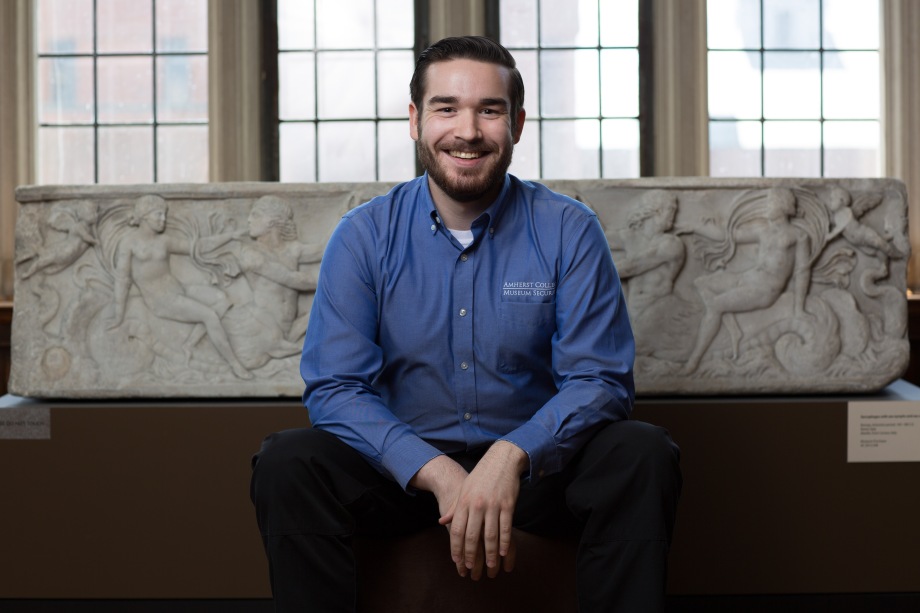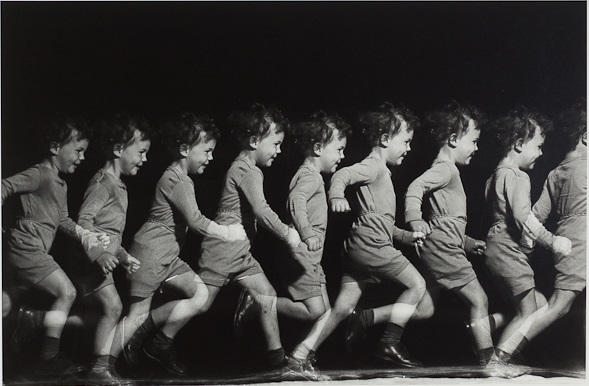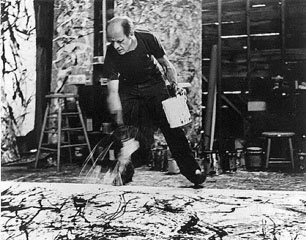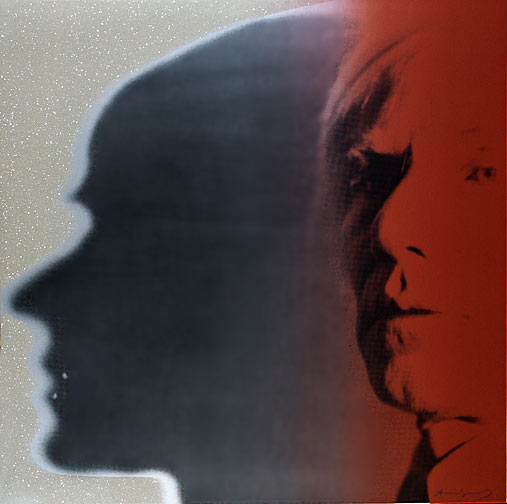“Museum guards find the lost, shepherd the confused and save runaway toddlers from impending collisions with immovable sculptures.” — David Wallis, “Varied Duties, and Many Facets, in a Guard’s Life,” New York Times, March 20, 2013
Soon after graduating from UMass Amherst in the spring of 2015, Derrek Joyce began working as an officer for Amherst College Museum Security. With a bachelor’s degree in classics and the goal of starting graduate work in art and museum studies in the next year or two, Derrek currently spends many days and nights (the Mead famously stays open until midnight during the academic year) patrolling the art galleries.

A handful of major artists started out as museum guards, including Jackson Pollock, Sol LeWitt, and Mel Bochner. While an interest in art is a great asset on the job, it also helps to have good people skills and to enjoy chatting with museum visitors, something Derrek says he loves.
A challenge all museum guards face is anticipating the actions of children in the museum—and making sure there’s ample space between the kids and the art.

Young visitors are always welcome, including large school groups, but sometimes, Derrek says, there’s just no predicting what they’re going to do next. “I watch children like a hawk,” he says, “regardless of how well-behaved they are.”
Here’s what else we learned from our conversation with Derrek.
The Mead has become my second home because of the welcoming staff and environment and the number of hours I am physically here.
As an aspiring museum curator, I regard talking with visitors one of the most fascinating parts of the job. On an average day I encounter anywhere from two to two hundred visitors, potentially more if we’re hosting a large event. Each day’s group is new and unpredictable.

Students typically come to the Mead to study solo or in groups. Others come in on dates.
We occasionally see local celebrities, most notably Amherst College’s own President Biddy Martin and author and illustrator Eric Carle.

Some visitors enjoy a quasi-celebrity status of their own, such as the woman who happened to come in shortly after Andy Warhol’s print The Shadow went on view and revealed to me that she had spent a period of her career creating diamond dust for Warhol.
My experience watching visitors to the Mead has made me truly see that there is no one style of art that everyone enjoys.
A work on view that I personally love is the Late Classical Roman Relief Fragment with dining hero or god.

I could spend hours gushing over how there is so much there in the faded stone, and yet not enough to properly identify the figure. Many visitors walk past it without a glance.
I once turned around just in time to see a child touch [19th-century painting]] The Fawn’s Leap. Another child on a school tour opened a hidden door in the Rotherwas Room, just minutes after explicitly being told not to touch the walls. One even did a dance I can only describe as a crab in a chorus line.